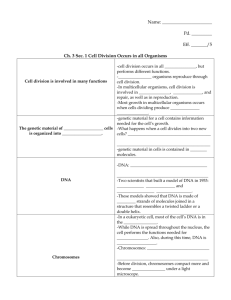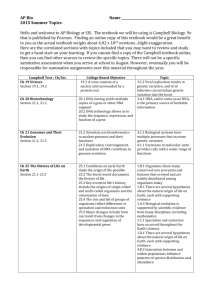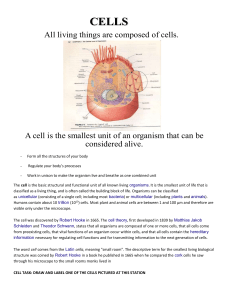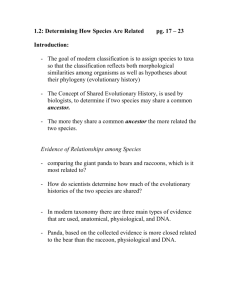DNA classification
advertisement
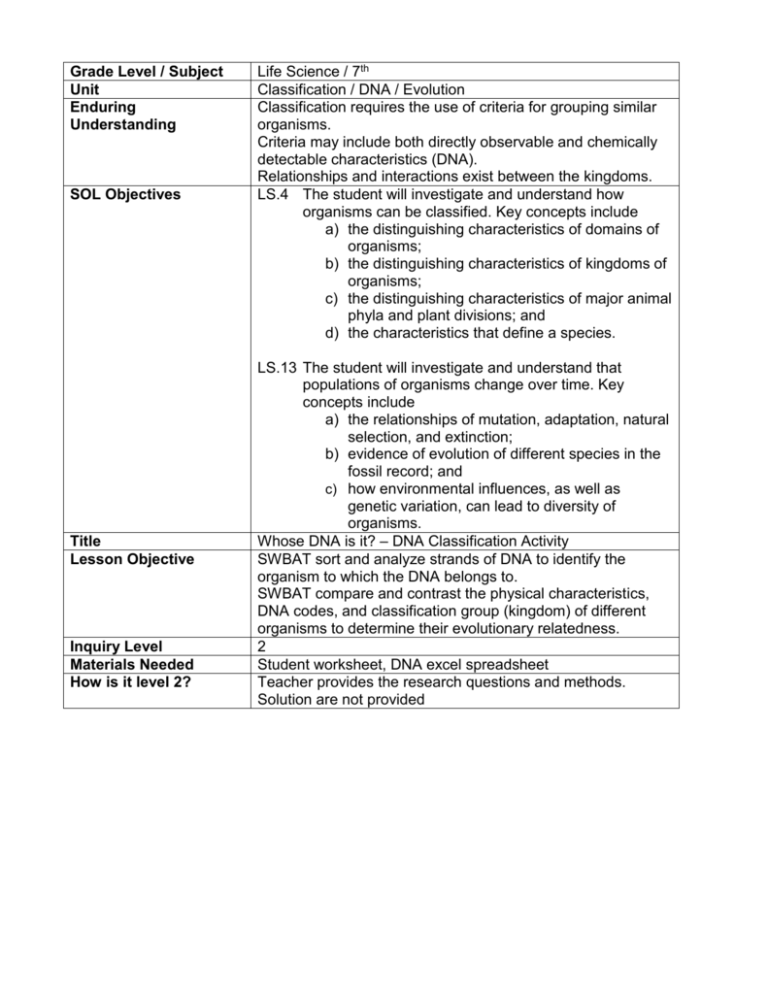
Grade Level / Subject Unit Enduring Understanding SOL Objectives Title Lesson Objective Inquiry Level Materials Needed How is it level 2? Life Science / 7th Classification / DNA / Evolution Classification requires the use of criteria for grouping similar organisms. Criteria may include both directly observable and chemically detectable characteristics (DNA). Relationships and interactions exist between the kingdoms. LS.4 The student will investigate and understand how organisms can be classified. Key concepts include a) the distinguishing characteristics of domains of organisms; b) the distinguishing characteristics of kingdoms of organisms; c) the distinguishing characteristics of major animal phyla and plant divisions; and d) the characteristics that define a species. LS.13 The student will investigate and understand that populations of organisms change over time. Key concepts include a) the relationships of mutation, adaptation, natural selection, and extinction; b) evidence of evolution of different species in the fossil record; and c) how environmental influences, as well as genetic variation, can lead to diversity of organisms. Whose DNA is it? – DNA Classification Activity SWBAT sort and analyze strands of DNA to identify the organism to which the DNA belongs to. SWBAT compare and contrast the physical characteristics, DNA codes, and classification group (kingdom) of different organisms to determine their evolutionary relatedness. 2 Student worksheet, DNA excel spreadsheet Teacher provides the research questions and methods. Solution are not provided Name: ___________________________________________ Date: __________ Block: _____ Whose DNA is it? DNA Classification Activity Background: One way to tell how closely related, evolutionarily, different species of organisms are is by examining their DNA. The more similar the DNA sequence is for two different species the more recently they have evolved from a common ancestor. Colored Handout – Each line represents the same gene that exists in four different organisms (Human, Chimpanzee, Mouse, Mold). Every time you see a red letter it means that the base is different from the usual sequence. Directions Part 1 : Fill out this table - What do you know about these four organisms? Organism Mouse Human Chimpanzee Relative Size (large, small) Characteristics Habitat Kingdom? Mold 1. Do some of these organisms seem more similar than others? Do any seem really different? Explain. Part 2: Colored Handout - For each of the four lines, count the number of red DNA bases, which are those that differ from the typical code, and write the total on the line below that says “# different.” Line # different Total # of bases % Different (# diff. / total #)*100 A (Red) B (White) C (Yellow) D (Green) 2. How might the lines of DNA bases relate to the physical similarities and differences, or traits in these organisms? Explain. Hypothesize which organism above corresponds to which DNA sequence. Sequence Probable organism A (Red) B (White) C (Yellow) D (Green) 3. How do you think DNA can help with the classification of organisms into different biological kingdoms? Give an example from the activity. 4. What do you think were the big ideas to be learned from this lesson? 5. What is a question you have after doing this activity?



